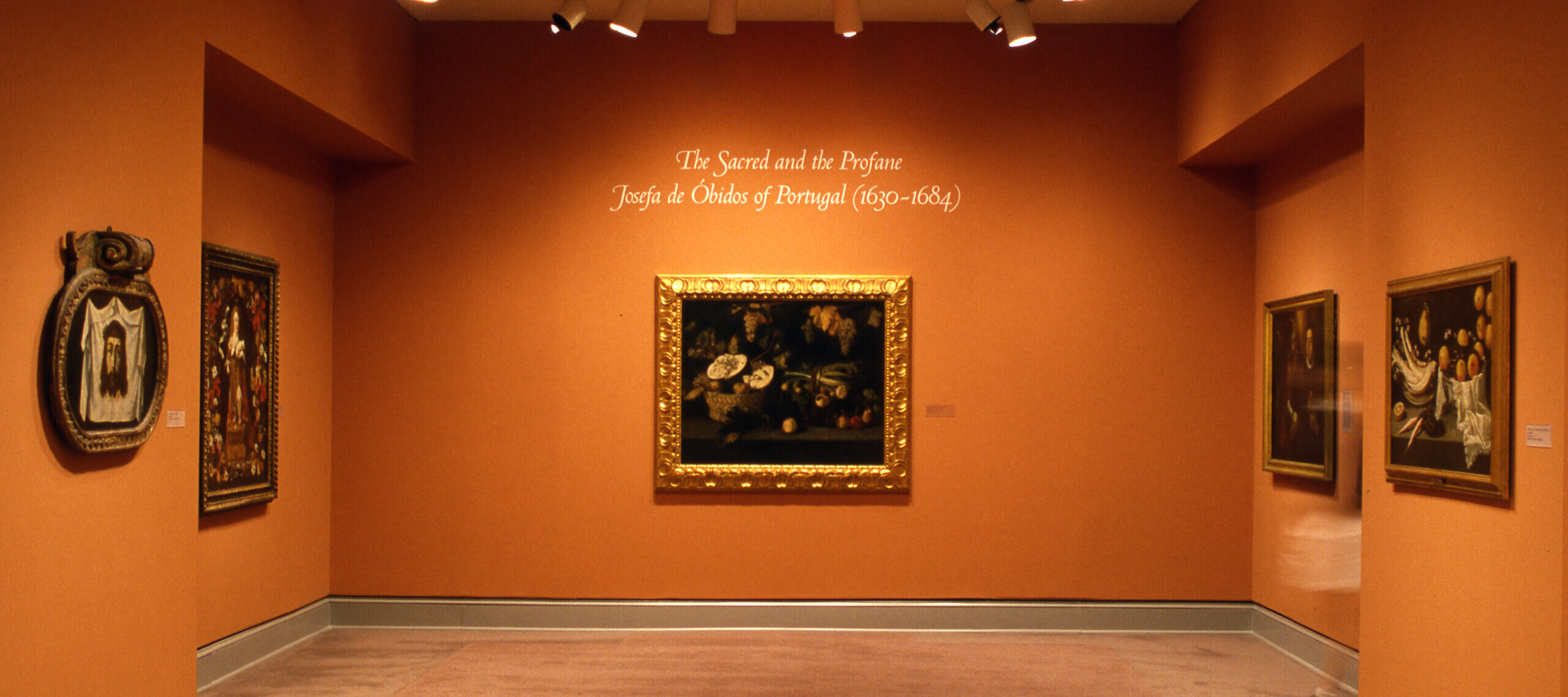Rarely seen paintings and engravings by Josefa de Obidos are on view at NMWA from June 1 through September 7, 1997 in this first-ever ever U.S. exhibition featuring this Portuguese artist. The Sacred and the Profane: Josefa de Obidos of Portugal (1630-1684) includes 47 paintings drawn from major public and private collections throughout Portugal.
These elaborate still-life and religious works have long been recognized by the Portuguese for their exceptional beauty and profound symbolism. A number have never been publicly exhibited. “The technical brilliance and elaborate symbolism of Josefa de Obidos’s still-life paintings and religious subjects provide our modern viewers with a window into the spirit of the age of seventeenth-century Portugal,” said Rebecca Phillips Abbott, director of the museum. “At the same time, the exhibition reinforces the fact that prominent women artists were active prior to the nineteenth century.”
Josefa de Obidos began her artistic career in the manner available to women in the seventeenth century: by training with her father, artist Baltazar Gomes Figueira. She studied his personal collection of prints and paintings and the works of Francisco de Herrera, a prominent artist in Seville. She drew inspiration from prints of Spanish, Italian, Flemish, and French paintings, as well as from paintings by Portuguese artists, most notably André Reinoso.
By the age of 15, Josefa de Obidos was adept at producing technically sophisticated engravings. She soon mastered miniature painting, a skill she applied in her paintings on copper, several of which are in the show. She is also mentioned in early literature as a woman who painted “for curiosity’s sake,” which suggests that she painted for her own pleasure.
Although highly influenced and influential, her life was circumscribed by the walled, provincial city of Obidos and by the Augustine convent in which she was educated. Her lifelong affiliation with the Carmelites and the Franciscans is reflected in the profound symbolism of both her still-life and religious paintings. Despite her cloister-like lifestyle, her work suggests a sophisticated understanding of artistic trends in continental sixteenth and seventeenth-century European art. Josefa de Obidos was an anomaly for her time. She did not marry and earned her living by painting and as a property owner and landlord.

Installation image of The Sacred and the Profane: Josefa de Obidos of Portugal (1630-1684)
